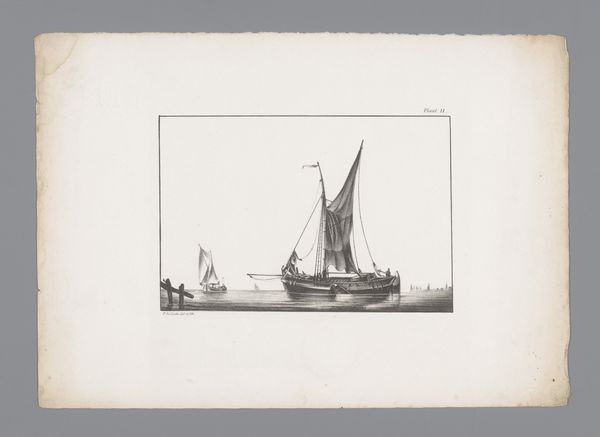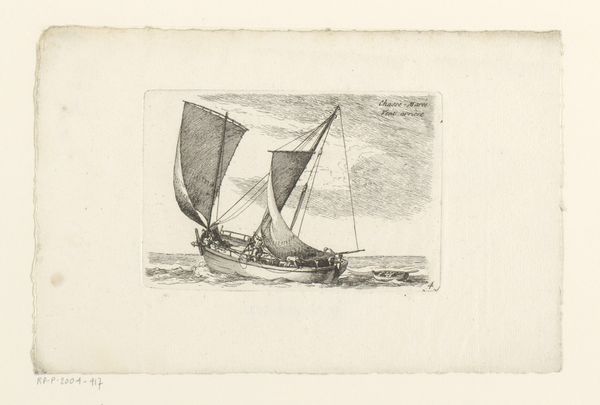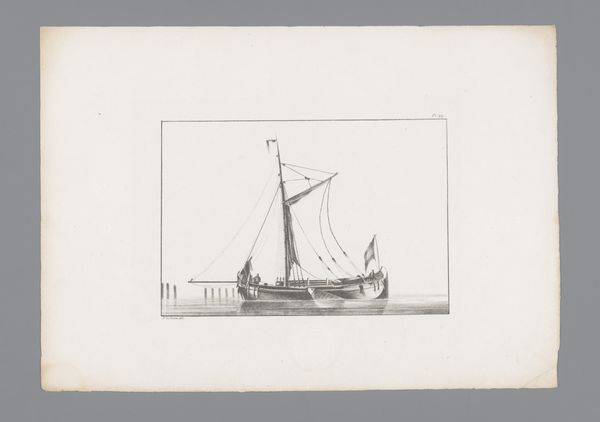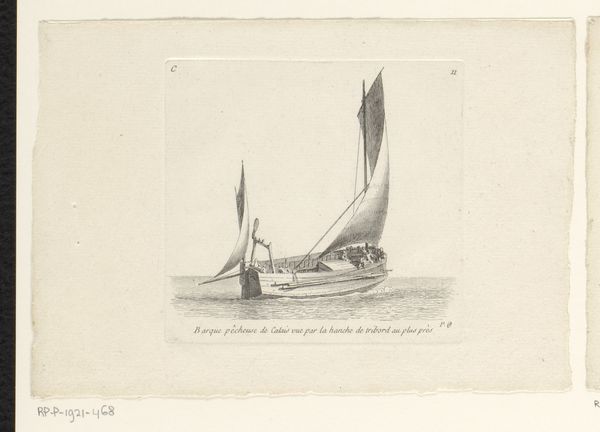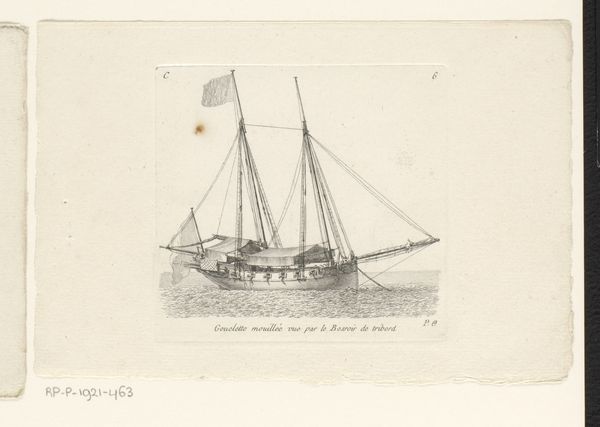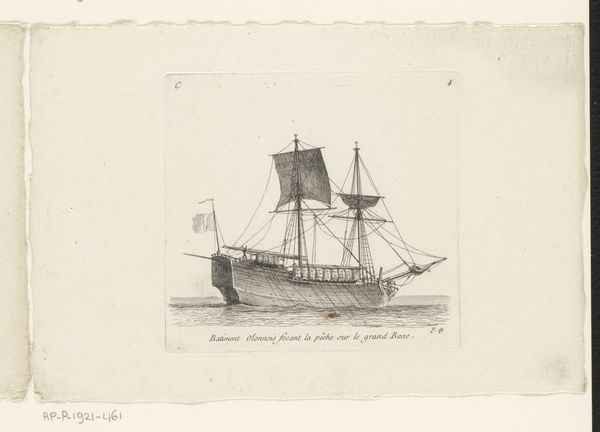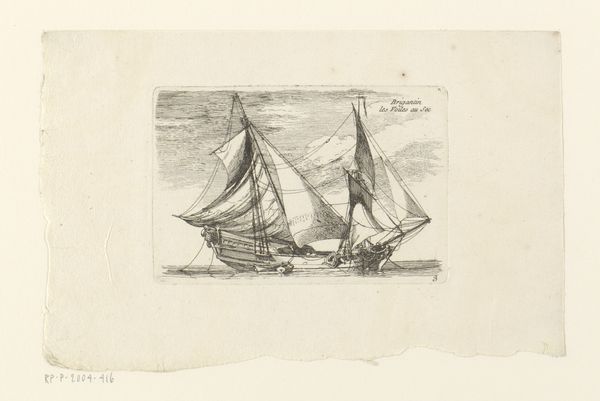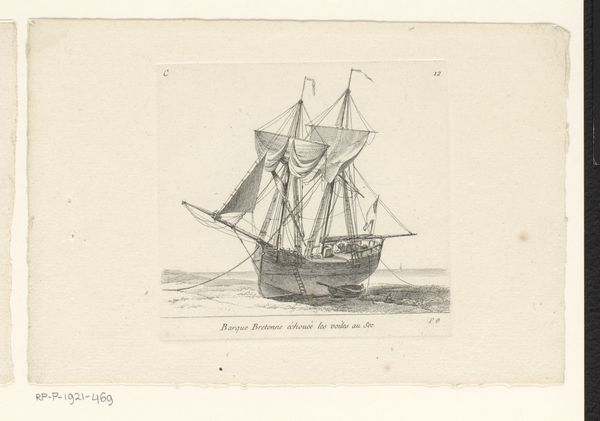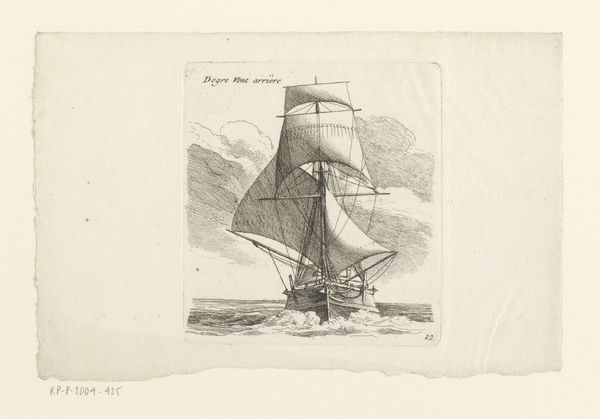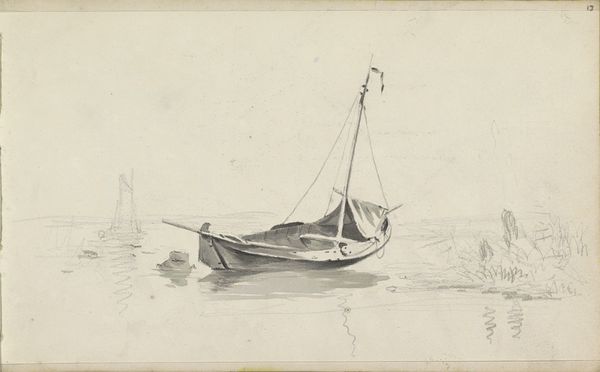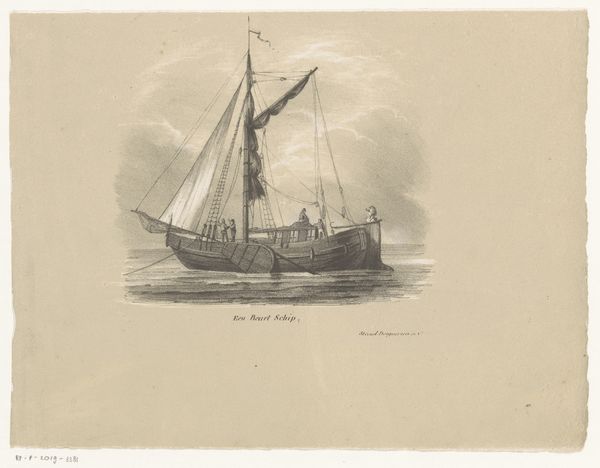
Dimensions: height 113 mm, width 118 mm
Copyright: Rijks Museum: Open Domain
Editor: So this is "Inladen van een bark," by Pierre Ozanne, dating from 1747 to 1813. It’s an etching and engraving on paper. It’s pretty delicate. What stands out to me is the focus on this one specific, rather grounded-looking boat amidst the vastness of the sea. What catches your eye? Curator: As a materialist, I find the process fascinating. This isn't just about depicting a boat; it's about the labor embedded in the etching and engraving process itself. Think about the artist's hand, meticulously carving these lines into the plate. And then, consider the materiality of the paper, its source and the labour in manufacturing that very surface we're engaging with visually. Does the detail of the etching influence how you interpret the subject matter? Editor: I guess I hadn’t really thought about the process itself that deeply. Knowing it’s an etching makes me consider the kind of labor required to produce so much detail, especially in rendering the boat itself. So the "loading of the bark," implies a ton of manual labor that the artist emulates through etching, is that it? Curator: Precisely. Consider also what would have been "loaded onto this bark," and the relationship of those materials and commodities to a globalised market at the time, and the social and labour practices associated. This challenges the separation between art and craft and high and low culture. How does recognizing the laborious and material basis of this print change its meaning for you? Editor: It's given me a lot to think about! I was initially just reacting to the romanticism and realism styles but now, thinking about labor helps ground that interpretation in something more tangible. The piece now seems like a record of more than just the vessel in view but something about trade and labour. Curator: Indeed, seeing art as embedded within its material conditions allows us to look past the aesthetic and engage with it as part of broader systems of production and consumption, allowing the artistic production of art, even as a "high form," of visual representation to be thought about through working. Editor: Thanks, I think I see that in a completely new way.
Comments
No comments
Be the first to comment and join the conversation on the ultimate creative platform.

